Science
Frogs and Toads Together: Why do Amphibians Group Up?April 11, 2025

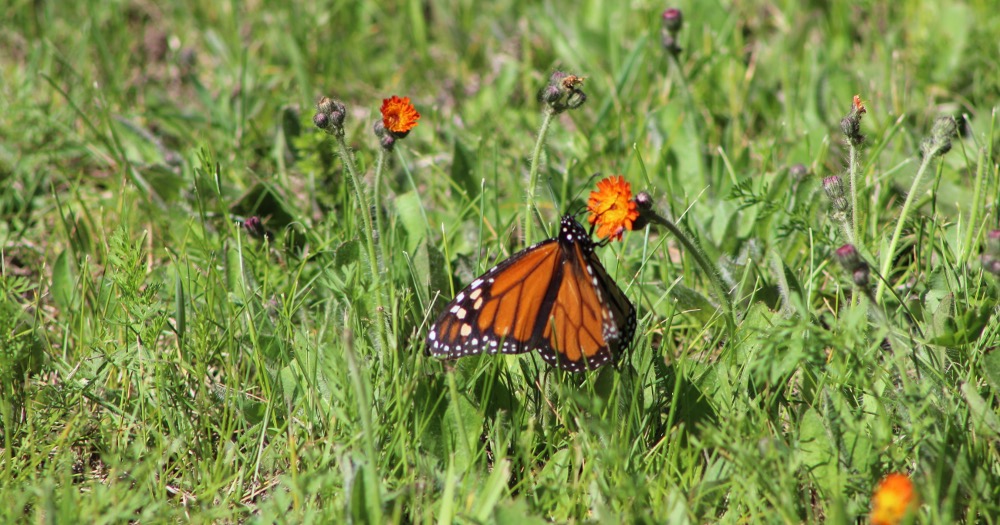
This article was written for students to research survival strategies butterflies use for the Naturally Teaching Butterfly Life Cycle and Heredity Mini Unit but is a great read for anyone looking to learn more about the ways butterflies use their looks to survive.
What butterfly looks like a monarch? Which butterfly looks like eyes? Wait, there’s a butterfly that looks like a leaf? These questions are just the tip of the iceberg when it comes to all the amazing things that butterflies can do to survive. Teaching about butterflies in your elementary classroom can be a great way to bring real-world experiences and place-based learning into your science education.
When it comes to providing real-world experiences, there are many benefits to teaching about butterflies. These lovely creatures appeal to children of all ages (and adults) and can be found on six of the seven continents on the Earth, making them a high-interest topic. They can also be found in every different kind of ecosystem, showing off their amazing abilities to find what they need to survive.
When teaching about butterflies in the classroom, they are often used for lessons to teach life cycles. Most butterflies have a four stage life cycle that follows the egg, larva, pupa, and adult progression. This makes them ideal for teaching early childhood learners about life cycles since each stage is distinct.
Teaching about butterflies is also a great way to teach about heredity and how parents pass down traits to help their young survive. Butterflies implement a number of survival strategies to help their species continue in the future. This article is all about 5 of those survival techniques passed from adult butterflies to their offspring.
Many people are drawn to bright colors in nature since they stick out from the surroundings, but there are many predators that use color as a way to identify if something is ok to eat. Aposematic (uh-powz-ma-tuhk) coloration is a survival strategy used by toxic plants and animals to give warnings to possible predators.
One of the most famous examples of a butterfly that has aposematic coloration is the Monarch butterfly. These insects have bright orange wings as adults; a color many predators have learned to stay away from. Monarchs are a toxic butterfly thanks to the milkweed plants that they eat as caterpillars.
Milkweed has a toxin that monarchs store when they eat the leaves in their larval stage. When a bird eats a Monarch caterpillar or adult, they could end up feeling sick due to the stored toxins in the Monarch’s body. The unpleasant feeling they get from eating one of these life stages is something they try to avoid in the future.
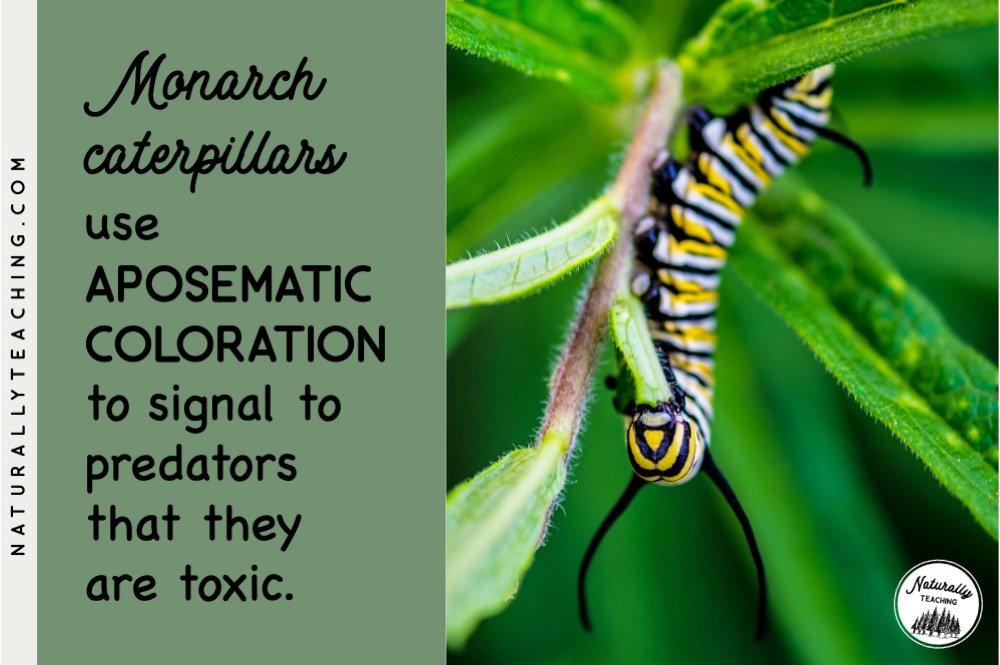
Other colors that scientists have found provide a warning to predators include red, yellow, and white. Patterns are another clue to predators that an animal may be unsafe to eat; scientists have found predators avoid animals with spots and stripes.
The aposematic coloration doesn’t just work for adult butterflies, it can also be used in the larval stage as well. Monarch caterpillars are striped with yellow, black, and white, signaling to predators that they are toxic and should not be eaten.
The Monarch butterfly can scare animals off with its toxicity, but did you know that there are other butterflies that look like Monarchs that are not toxic? By pretending to be a Monarch through mimicry, other butterflies have a better chance of surviving because predators take their similar looks as a warning of toxicity.
So, what butterfly looks like a monarch? The Viceroy is a harmless butterfly that looks almost identical to a Monarch butterfly. The way to tell these two butterflies apart is an extra line on the hind, or bottom, wing of the Viceroy that is missing in Monarch butterflies.
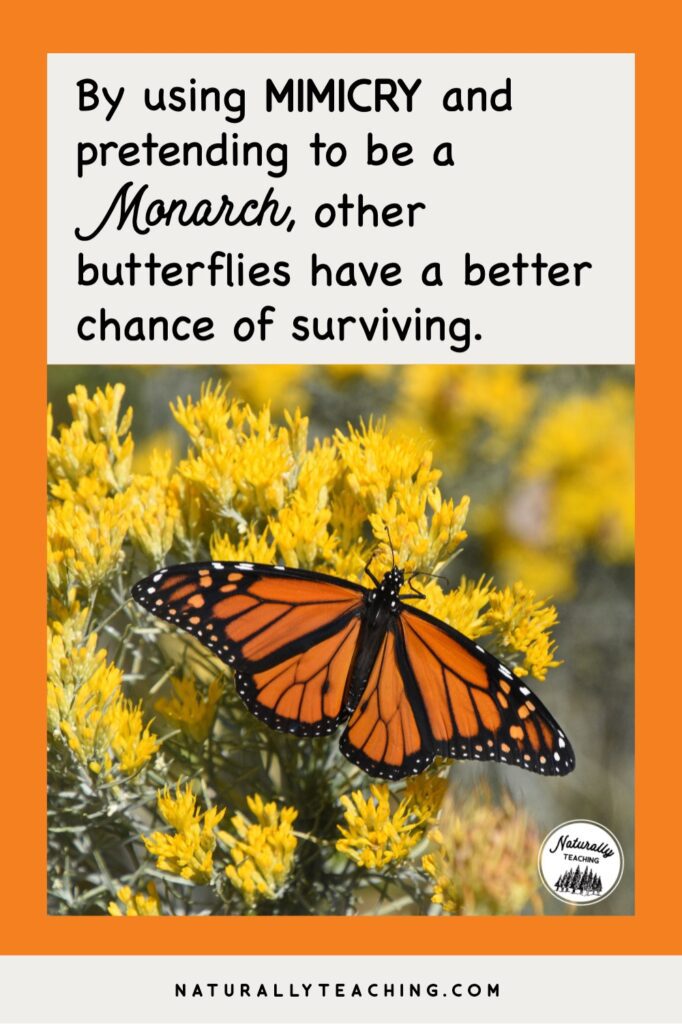
There is also the Queen butterfly that has orange wings with some black lines and white dots. This butterfly doesn’t look as close to a Monarch as a Viceroy, but if seen flying quickly it could be mistaken for a Monarch.
There is also the Soldier butterfly with orange wings and black lines with white dots. This butterfly’s wing veins look more similar to a Monarch than the Queen butterfly, but again, is not as good of a mimic as the Viceroy.
Another way that butterfly looks can help keep predators from striking is for them to look like something scary. Some butterflies look like they have eyes on their wings. Patterns that are scary to predators are called deimatic patterns.
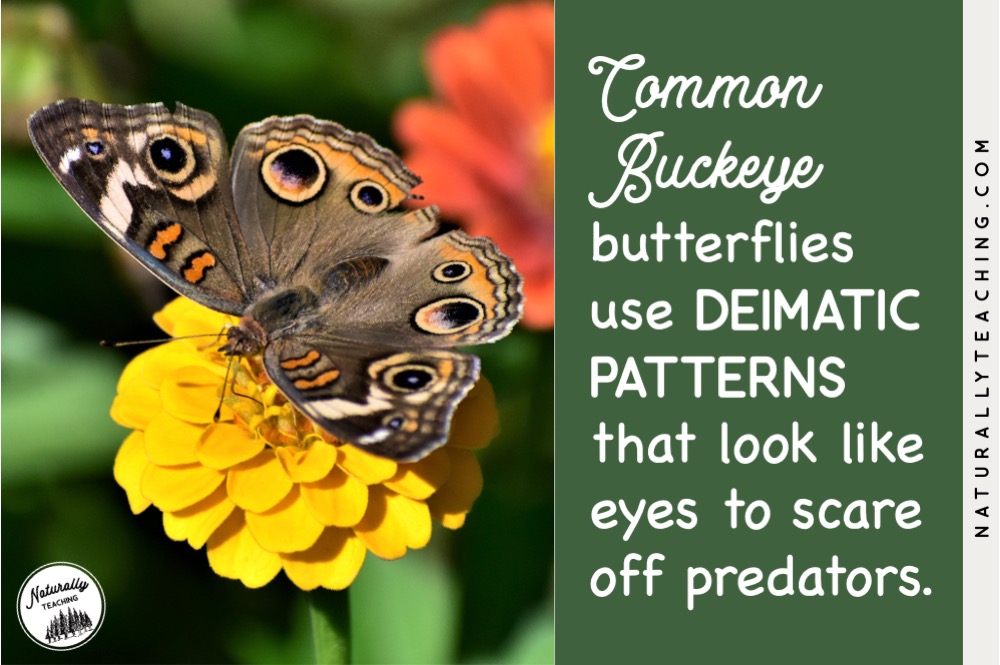
An example of a butterfly that looks like eyes is the Common Buckeye butterfly. It’s a mostly brown butterfly but has very distinct eye shapes on both its forewings (top wings) and hindwings (bottom wings). The eye patterns can scare a predator long enough for the butterfly to escape.
Not only do butterflies use this technique in their adult stage, but there are caterpillars that have these same sorts of patterns. The Spicebush Swallowtail caterpillar has two large eye-like patterns on their thoraxes that can easily startle predators. *Fun fact: the Spicebush Swallowtail caterpillar was the inspiration for the Pokemon Caterpie.
A more familiar way that looks can help a butterfly survive is camouflage. Camouflage is when colors and patterns help something blend into their surroundings. There are many butterflies that use this technique.
One example of a butterfly that looks like a leaf is the Question Mark butterfly. A Question Mark butterfly can close its wings when it rests to blend in with dead leaves from previous seasons. Its wings are shaped like leaves and are brown and veined.
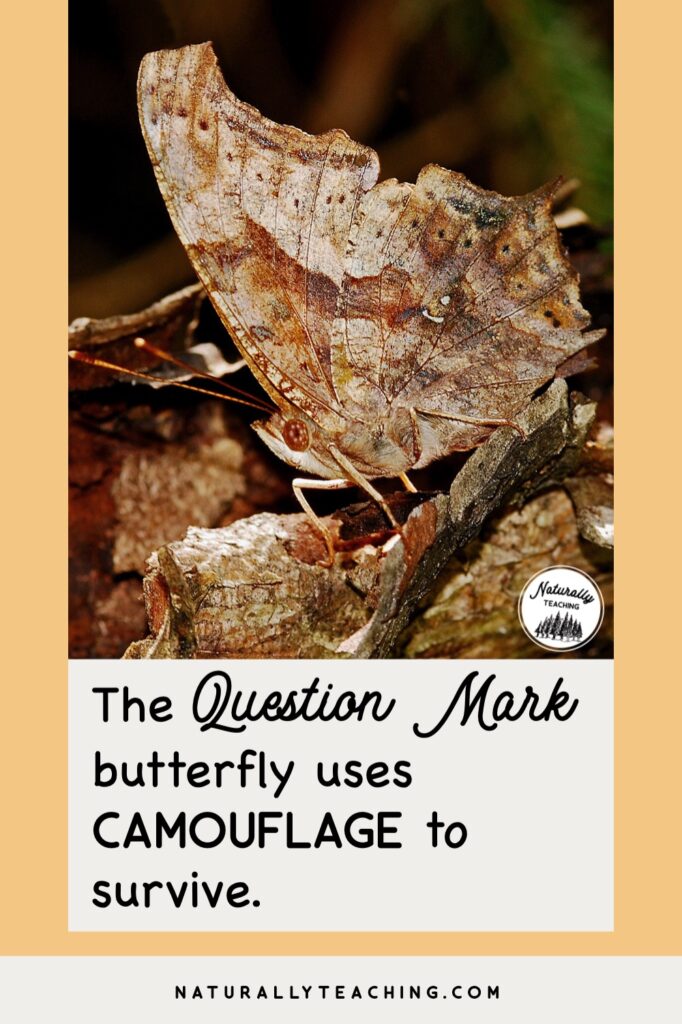
Camouflage doesn’t just benefit adult butterflies, it’s also a strategy used during the pupa stage. Many butterfly chrysalises look like dead leaves or healthy green leaves. An example of this is the Black Swallowtail butterfly’s chrysalis. When the caterpillar first pupates, it has a green chrysalis that looks like a leaf attached to a tree. It then turns brown and looks like a previous year’s leaf.
Some butterflies have colors that make the boys look different than the girls. When males look different than females it’s called dimorphism. If a species of butterflies has dimorphic coloration, the male will be brightly colored and the female will be the colors of the surroundings.
Scientists believe that male butterflies are brightly colored so that they can tell the females they have good genetics that will make healthier babies. They also think that by boy butterflies being more brightly colored, they will get into fewer territorial fights with each other.
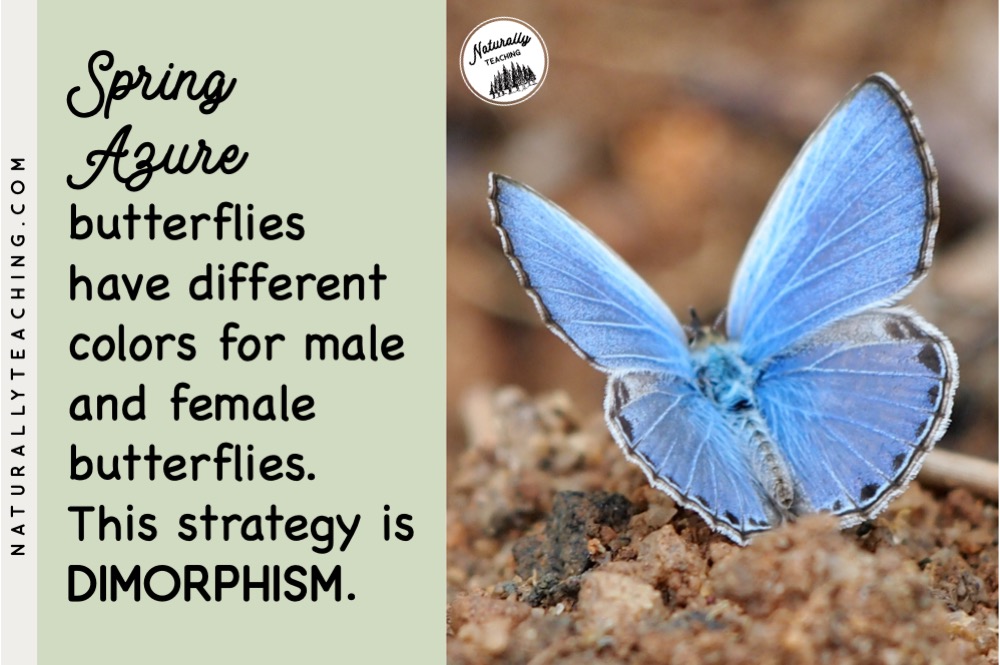
Scientists believe that the females benefit from camouflage colors so that after they mate they have a better chance of avoiding predators while they look for a good place to lay their eggs.
An example of a butterfly where boys and girls look different is the Spring Azure butterfly. These butterflies are very small and are some of the first to emerge in the spring. The male is bright blue and the females are a darker blue with black coloration, helping them blend into the forest floor.
Teaching about butterflies in your elementary classroom can really catch your students’ attention. Being able to answer the question, “what butterfly looks like a monarch and why?” can take some real critical thinking skills and can help you reach your curricular goals about animal survival as well as heredity. I hope these five survival strategies got you inspired to consider teaching about butterflies in your classroom this spring!
Bibliography
Casalena, E.(2023, April 8). Discover 12 Beautiful Butterflies That Live in Michigan. https://a-z-animals.com/blog/discover-beautiful-butterflies-that-live-in-michigan/
Hoskins, A. (n.d.) Strategies for Survival. Retrieved from https://www.learnaboutbutterflies.com/SurvivalStrategies.html
Do you have any amazing experiences teaching about butterflies in your classroom? Describe them in the comments section to inspire a fellow elementary teacher to take action!
Looking for more animal adaptation information? Check out “Over and Under the Snow by Kate Messner: Teaching Animal Adaptations”
2 thoughts on “What Butterfly Looks Like a Monarch and 4 Other Butterfly Survival Strategies”